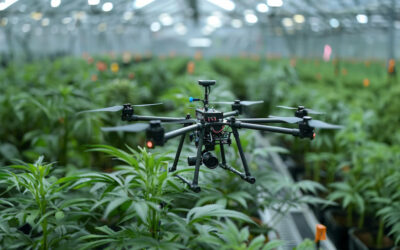
The Endocannabinoid System
The Endocannabinoid System (ECS) is a fascinating and complex biological system that plays a crucial role in maintaining balance and homeostasis within the human body. Even if you’ve never heard of it, the ECS is quietly working behind the scenes, influencing a wide range of physiological processes to ensure your well-being.
At its core, the ECS consists of three main components: cannabinoids, receptors, and enzymes. To grasp the ECS, let’s break down each element and understand how they collaborate to keep your body in harmony.
The Cannabinoids
Firstly, cannabinoids are signalling molecules. They act as messengers that relay information throughout the body. While cannabinoids can come from external sources, such as the cannabis plant, the body also produces its own cannabinoids known as endocannabinoids. The two primary endocannabinoids identified so far are anandamide and 2-arachidonoylglycerol (2-AG). These endocannabinoids are synthesised on demand, meaning they are produced as needed in response to specific physiological signals.
The Receptors
The second component is receptors. These are like locks on the surface of cells, and they are known as CB1 and CB2 receptors. CB1 receptors are primarily found in the central nervous system, particularly in the brain, while CB2 receptors are more prevalent in the peripheral nervous system, immune cells, and organs. When cannabinoids, whether endocannabinoids or those from external sources bind to these receptors, it’s akin to inserting a key into a lock. This binding triggers a cascade of biological responses that modulate various functions in the body.
Imagine cannabinoids as messengers navigating a vast network, delivering specific instructions to cells. For instance, when cannabinoids bind to CB1 receptors in the brain, they can influence mood, appetite, and memory. On the other hand, CB2 receptors, commonly found in immune cells, contribute to the regulation of inflammation and immune responses.
The Enzymes
Enzymes play a crucial role in the ECS as well. After cannabinoids have fulfilled their role and the message has been delivered, enzymes come in as the cleanup crew. Two key enzymes, fatty acid amide hydrolase (FAAH) and monoacylglycerol lipase (MAGL), break down endocannabinoids like anandamide and 2-AG, respectively. This process ensures that the effects of cannabinoids are precisely controlled and don’t linger longer than necessary.
Working In Harmony
The ECS operates as a dynamic and adaptive system, responding to internal and external stimuli to maintain balance within the body. Whether you’re facing stress, inflammation, or other challenges, the ECS acts as a regulatory mechanism, orchestrating a symphony of responses to bring the body back to equilibrium.
Research suggests that a well-functioning ECS is crucial for overall health and may contribute to the treatment of various medical conditions. For example, in cases of chronic pain, the ECS can play a role in modulating pain perception. In autoimmune disorders, the regulation of immune responses by the ECS becomes particularly significant.
The endocannabinoid system is a remarkable and intricate network within the human body. It highlights the profound interconnectivity of various physiological processes and demonstrates how cannabinoids, receptors, and enzymes work in harmony to promote health and well-being. As scientific understanding of the ECS continues to evolve, it opens new avenues for exploring therapeutic interventions that target this system, potentially offering novel treatments for a wide range of health conditions.









































